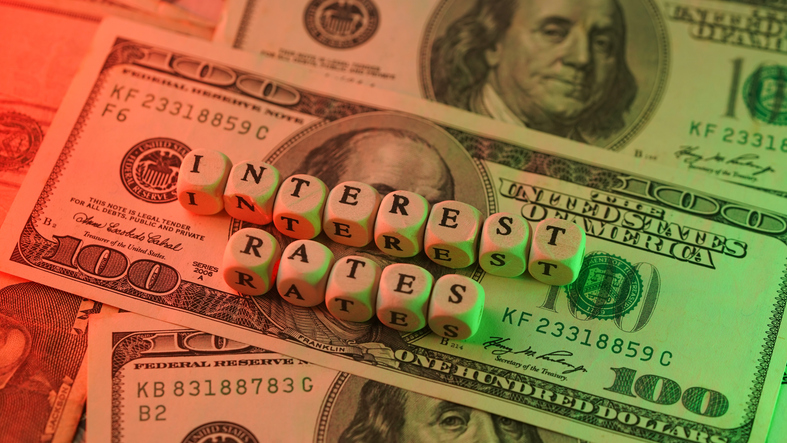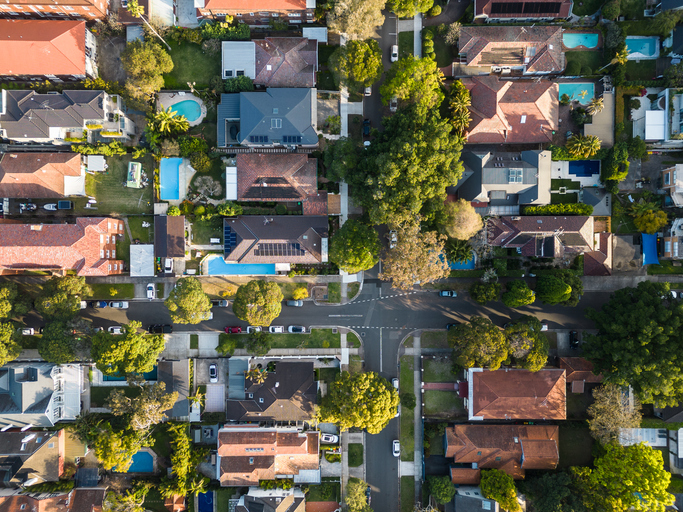RBA Board pushes cash rate to 4.1 percent
Mortgage holders are set to feel the pinch as board wrestles with stubbornly high services inflation
The Reserve Bank of Australia has decided to raise the cash rate by a further 25 basis points in a meeting of the RBA Board today.
The interest rate now stands at 4.1 percent and represents the 12th increase since April last year.
In a statement by Governor Philip Lowe, the board noted that inflation had already peaked at 7 percent but it looked likely to remain stubbornly high for some time. With the understanding that it is likely to be an unpopular move with mortgage holders, Mr Lowe said the decision was taken to provide ‘greater confidence’ that inflation would fall to manageable levels within a reasonable time frame.
“High inflation makes life difficult for people and damages the functioning of the economy,” Mr Lowe said. “It erodes the value of savings, hurts family budgets, makes it harder for businesses to plan and invest, and worsens income inequality.
“And if high inflation were to become entrenched in people’s expectations, it would be very costly to reduce later, involving even higher interest rates and a larger rise in unemployment.”
Although goods price inflation had slowed, he noted the impact of high services inflation, which remains high in overseas markets as well. Last week’s announcement by the Fair Work Commission that will see award wages rise by 5.75 percent and minimum wages by 8.6 percent from July 1 had further pointed to a likely rate rise.
Mr Lowe said the Board would continue to monitor economic conditions, including household spending and productivity both here and overseas but foreshadowed ‘some further tightening of monetary policy may be required’.
“The Board is still seeking to keep the economy on an even keel as inflation returns to the 2–3 per cent target range, but the path to achieving a soft landing remains a narrow one,” he said.
A significant source of uncertainty continues to be the outlook for household consumption, he said.
“The combination of higher interest rates and cost-of-living pressures is leading to a substantial slowing in household spending. Housing prices are rising again and some households have substantial savings buffers, although others are experiencing a painful squeeze on their finances.
“There are also uncertainties regarding the global economy, which is expected to grow at a below-average rate over the next couple of years.”
PropTrack senior economist Eleanor Creagh said projected wage increases and persistently low levels of unemployment had given the board ‘further headroom’ to consider today’s decision to raise the cash rate.
“The labour market remains tight,” she said. “Despite the unemployment rate rising, it remains close to multi-decade lows. The pipeline of wage increases in the public sector and (the) minimum wage decision are expected to maintain wages pressure, potentially fuelling inflation to remain elevated.”
The risk of a wage-price spiral is an ongoing concern for the central bank, she said.
“The RBA expects it will take a couple of years before inflation returns to the top of the target range, with the statement highlighting that the board is ready to do more to get inflation back down should it be necessary.”
This is in addition to rises experienced in housing prices this year, despite consistent increases in the cash rate. Ms Creagh said the conditions for higher home prices remained, despite the interest rate hike.
“The factors precipitating stronger housing demand – population growth and tight rental markets – remain alongside an undersupply of new homes,” she said. “This may see home prices to continue to lift in the months ahead.”
This stylish family home combines a classic palette and finishes with a flexible floorplan
Just 55 minutes from Sydney, make this your creative getaway located in the majestic Hawkesbury region.
As Paris makes its final preparations for the Olympic games, its residents are busy with their own—packing their suitcases, confirming their reservations, and getting out of town.
Worried about the hordes of crowds and overall chaos the Olympics could bring, Parisians are fleeing the city in droves and inundating resort cities around the country. Hotels and holiday rentals in some of France’s most popular vacation destinations—from the French Riviera in the south to the beaches of Normandy in the north—say they are expecting massive crowds this year in advance of the Olympics. The games will run from July 26-Aug. 1.
“It’s already a major holiday season for us, and beyond that, we have the Olympics,” says Stéphane Personeni, general manager of the Lily of the Valley hotel in Saint Tropez. “People began booking early this year.”
Personeni’s hotel typically has no issues filling its rooms each summer—by May of each year, the luxury hotel typically finds itself completely booked out for the months of July and August. But this year, the 53-room hotel began filling up for summer reservations in February.
“We told our regular guests that everything—hotels, apartments, villas—are going to be hard to find this summer,” Personeni says. His neighbours around Saint Tropez say they’re similarly booked up.
As of March, the online marketplace Gens de Confiance (“Trusted People”), saw a 50% increase in reservations from Parisians seeking vacation rentals outside the capital during the Olympics.
Already, August is a popular vacation time for the French. With a minimum of five weeks of vacation mandated by law, many decide to take the entire month off, renting out villas in beachside destinations for longer periods.
But beyond the typical August travel, the Olympics are having a real impact, says Bertille Marchal, a spokesperson for Gens de Confiance.
“We’ve seen nearly three times more reservations for the dates of the Olympics than the following two weeks,” Marchal says. “The increase is definitely linked to the Olympic Games.”

Getty Images
According to the site, the most sought-out vacation destinations are Morbihan and Loire-Atlantique, a seaside region in the northwest; le Var, a coastal area within the southeast of France along the Côte d’Azur; and the island of Corsica in the Mediterranean.
Meanwhile, the Olympics haven’t necessarily been a boon to foreign tourism in the country. Many tourists who might have otherwise come to France are avoiding it this year in favour of other European capitals. In Paris, demand for stays at high-end hotels has collapsed, with bookings down 50% in July compared to last year, according to UMIH Prestige, which represents hotels charging at least €800 ($865) a night for rooms.
Earlier this year, high-end restaurants and concierges said the Olympics might even be an opportunity to score a hard-get-seat at the city’s fine dining.
In the Occitanie region in southwest France, the overall number of reservations this summer hasn’t changed much from last year, says Vincent Gare, president of the regional tourism committee there.
“But looking further at the numbers, we do see an increase in the clientele coming from the Paris region,” Gare told Le Figaro, noting that the increase in reservations has fallen directly on the dates of the Olympic games.
Michel Barré, a retiree living in Paris’s Le Marais neighbourhood, is one of those opting for the beach rather than the opening ceremony. In January, he booked a stay in Normandy for two weeks.
“Even though it’s a major European capital, Paris is still a small city—it’s a massive effort to host all of these events,” Barré says. “The Olympics are going to be a mess.”
More than anything, he just wants some calm after an event-filled summer in Paris, which just before the Olympics experienced the drama of a snap election called by Macron.
“It’s been a hectic summer here,” he says.

AFP via Getty Images
Parisians—Barré included—feel that the city, by over-catering to its tourists, is driving out many residents.
Parts of the Seine—usually one of the most popular summertime hangout spots —have been closed off for weeks as the city installs bleachers and Olympics signage. In certain neighbourhoods, residents will need to scan a QR code with police to access their own apartments. And from the Olympics to Sept. 8, Paris is nearly doubling the price of transit tickets from €2.15 to €4 per ride.
The city’s clear willingness to capitalise on its tourists has motivated some residents to do the same. In March, the number of active Airbnb listings in Paris reached an all-time high as hosts rushed to list their apartments. Listings grew 40% from the same time last year, according to the company.
With their regular clients taking off, Parisian restaurants and merchants are complaining that business is down.
“Are there any Parisians left in Paris?” Alaine Fontaine, president of the restaurant industry association, told the radio station Franceinfo on Sunday. “For the last three weeks, there haven’t been any here.”
Still, for all the talk of those leaving, there are plenty who have decided to stick around.
Jay Swanson, an American expat and YouTuber, can’t imagine leaving during the Olympics—he secured his tickets to see ping pong and volleyball last year. He’s also less concerned about the crowds and road closures than others, having just put together a series of videos explaining how to navigate Paris during the games.
“It’s been 100 years since the Games came to Paris; when else will we get a chance to host the world like this?” Swanson says. “So many Parisians are leaving and tourism is down, so not only will it be quiet but the only people left will be here for a party.”
This stylish family home combines a classic palette and finishes with a flexible floorplan
Just 55 minutes from Sydney, make this your creative getaway located in the majestic Hawkesbury region.


















